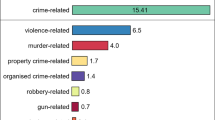Abstract
A social media (SoMe) firestorm can present a liability for personal brands via the loss of reputation, as well as for the organisational brand image. The drastic measures often taken in these situations, especially in cases of negative media attention or a scandal, usually involve dismissal of the related persons. Hence, predicting, monitoring, analysing and measuring SoMe firestorms related to organisations or individuals can be beneficial. This paper describes SoMe firestorms and their effect, using media analysis involving opinion mining. The analysis focuses on the human trash (ihmisroska) scandal that was caused by a local centre party politician in Finland. The politician caused a SoMe firestorm by describing homeless people and substance addicts as ‘human trash’. The analysis utilises machine learning to classify 3300 media hits in the Finnish language to analyse their sentiment during the SoMe firestorm. General conclusions are drawn about the spread and influence of the SoMe firestorm to form a basis for wider global generalisation. The study formulates a scale for quantifying and analysing the influence of SoMe firestorms. The scale includes three classes relating to the exponential rise of the effect, starting from 1, with 3 being the highest. This scale aligns with the literature, which states that these events usually follow the same pattern. The case example provides further direction for the presented 1–3 level scale.



Similar content being viewed by others
References
Ahmed, S., and A. Danti. 2015. A novel approach for sentimental analysis and opinion mining based on SentiWordNet using web data. Paper presented at the 2015 international conference on trends in automation, communications and computing technology (I-TACT-15); 21–22 December, Bangalore, India.
Al-Smadi, M., B. Talafha, M. Al-Ayyoub, and Y. Jararweh. 2019. Using long short-term memory deep neural networks for aspect-based sentiment analysis of Arabic reviews. International Journal of Machine Learning and Cybernetics 10(8): 2163–2175.
Berelson, B. 1952. Content analysis in communication research. Michigan: Free Press.
Bryman, A., and E. Bell. 2007. Business research methods, 2nd ed. Oxford: Oxford University.
Chaudhary, M., H. Kumar, S. Kaushal, and A.K. Sangaiah. 2018. The case analysis on sentiment based ranking of nodes in social media space. Multimedia Tools and Applications 77(4): 4217–4236.
Cristianini, N. 2011. Automatic discovery of patterns in media content. In Combinatorial pattern matching. CPM 2011. Lecture Notes in Computer Science, vol. 6661, ed. R. Giancarlo and G. Manzini. Berlin: Springer.
Dahlgren, S., S. Kivistö, and S. Paasonen. 2011. Johdanto: skandaalin maisema. In Skandaali! Suomalaisen taiteen ja politiikan mediakohut Porvoo, ed. S. Dahlgren, S. Kivistö, and S. Paasonen, 7–17. Porvoo: Bookwell Oy.
Do, H.H., P.W.C. Prasad, A. Maag, and A. Alsadoon. 2019. Deep learning for aspect-based sentiment analysis: A comparative review. Expert Systems with Applications 118: 272–299.
Downs, A. 1972. Up and down with ecology: The issue-attention cycle. Public Interest 28: 38–50.
Esser, F., and U. Hartung. 2004. Nazis, pollution and no sex. Political scandals as a reflection of political culture in Germany. American Behavioral Scientist 47(8): 1040–1071.
Flaounas, I., A. Omar, M. Turchi, T. Snowsill, F. Nicart, T. De Bie, and N. Cristianini. 2011. NOAM: News outlets analysis and monitoring system. In Proceedings of the 2011 ACM SIGMOD international conference on management of data.
Flaounas, I., M. Turchi, A. Omar, N. Fyson, T. De Bie, N. Mosdell, J. Lewis, and N. Cristianini. 2010. The structure of the EU mediasphere. PLoS ONE 5(12): e14243.
Harju, Aki. 2019. Pohjoisen kaivokset suomalaisissa sanomalehdissä. Acta Universitatis Ouluensis. B, Humaniora 170. http://urn.fi/urn:isbn:9789526221748.
Heinonen, A., and D. Domingo. 2009. Blogit journalismin muutoksen merkkinä. In Journalismi murroksessa, ed. E. Väliverronen, 68–87. Hakapaino: Helsinki.
Helasvuo, M.-L., M. Johansson, and S.-K. Tanskanen. 2014. Johdatus digitaaliseen vuorovaikutukseen. In Kieli verkossa – näkökulmia digitaaliseen vuorovaikutukseen, ed. M.-L. Helasvuo, M. Johansson, and S.-K. Tanskanen, 9–28. Vantaa: Hansaprint Oy.
Hillert, A., H. Jacobs, and S. Müller. 2018. Journalist disagreement. Journal of Financial Markets 41(November): 57–76.
Juntunen, L., and E. Väliverronen. 2009. Intiimin politiikka ja skandaalin yhteiskunnallinen merkitys. In Journalismi murroksessa, ed. E. Väliverronen, 262–284. Helsinki: Gaudeamus.
Kantola, A., and J. Vesa. 2011. Skandaalit ja julkinen elämä Suomessa. In Hetken hallitsijat. Julkinen elämä notkeassa yhteiskunnassa, ed. A. Kantola. Helsinki: Gaudeamus.
Karvonen, E. 2011. Julkkispoliitikko median suurennuslasissa. In Kuinka meitä kutsutaan? Kulttuuriset merkityskamppailut nyky-Suomessa, ed. A. Koivunen and M. Lehtonen, 187–218. Tampere: Vastapaino.
Laaksonen, S.-M., J. Matikainen, and M. Tikka. 2013. Tutkimusotteita verkosta. In Otteita verkosta, ed. S.-M. Laaksonen, J. Matikainen, and M. Tikka, 9–33. Tampere: Vastapaino.
Lampos, V., and N. Cristianini. 2012. Nowcasting events from the social web with statistical learning. In ACM transactions on intelligent systems and technology (TIST) archive 3(4): Article 72.
Lansdall-Welfare, T., S. Sudhahar, J. Thompson, J. Lewis, FindMyPast Newspaper Team, and N. Cristianini. 2017. Content analysis of 150 years of British periodicals. Proceedings of the National Academy of Sciences 114(4): E457–E465. https://doi.org/10.1073/pnas.1606380114.
Lehtonen, J. 1999. Kriisiviestintä. Helsinki: Mainostajien liitto.
Liu, B., and L. Zhang. 2012. A survey of opinion mining and sentiment analysis. Mining Text Data. New York: Springer.
M-Brain, corporate communications, received 11/2015.
Moraes, R., J.F. Valiati, and W.P.G. Neto. 2013. Document-level sentiment classification: An empirical comparison between SVM and ANN. Expert Systems with Applications 40(2): 621–633.
Niemi, M.K. 2012. Timo Soini perussuomalaisen identiteetin isäntänä. In Jytky. Eduskuntavaalien 2011 mediajulkisuus. Kirja Aurora, ed. V. Pernaa and E. Railo, 324–349. Turku: Turun Yliopisto.
Nousiainen, A. 2017. Somekohun anatomia. Eli miten somekohut ja somekohuotsikot rakentuvat. Master’s thesis, Department of Language and Communication Studies. University of Jyväskylä.
Nuortimo, K., and J. Harkonen. 2019. Establishing an automated brand index based on opinion mining: Analysis of printed and social media. Journal of Marketing Analytics 7(3): 141–151.
Pfeffer, J., T. Zorbach, and K.M. Carley. 2014. Understanding online firestorms: Negative word-of-mouth dynamics in social media networks. Journal of Marketing Communications 20(1–2): 117–128.
Saunders, M., P. Lewis, and A. Thornhill. 2007. Research methods for business students, 4th ed. Upper Saddle River: Prentice Hall.
Scheufele, D. 1999. Framing as a theory of media effects. Journal of Communication 49(1): 103–122.
Stieglitz, S., and L. Dang-Xuan. 2013. Emotions and information diffusion in social media—Sentiment of microblogs and sharing behavior. Journal of Management Information Systems 29(4): 217–248.
Suhonen, P. 1994. Mediat, me ja ympäristö. Helsinki: Hanki ja jää.
Thompson, J.B. 2000. Political scandal. Power and visibility in the media age. Cambridge: Polity Press.
van Riel, C.B.M. 2013. Corporate reputation and the discipline of public opinion. In The handbook of communication and corporate reputation, ed. C.E. Carrol. Chichester, UK: Wiley-Blackwell, Wiley.
Westerman, D., P.R. Spence, and B. Van Den Heide. 2013. Social media as information source: Recency of updates and credibility of information. Journal of Computer-Mediated Communication 19(2): 171–183.
Author information
Authors and Affiliations
Corresponding author
Ethics declarations
Conflict of interest
On behalf of all the authors, the corresponding author states that there are no conflicts of interest.
Additional information
Publisher's Note
Springer Nature remains neutral with regard to jurisdictional claims in published maps and institutional affiliations.
Rights and permissions
About this article
Cite this article
Nuortimo, K., Karvonen, E. & Härkönen, J. Establishing social media firestorm scale via large dataset media analytics. J Market Anal 8, 224–233 (2020). https://doi.org/10.1057/s41270-020-00080-w
Revised:
Published:
Issue Date:
DOI: https://doi.org/10.1057/s41270-020-00080-w




